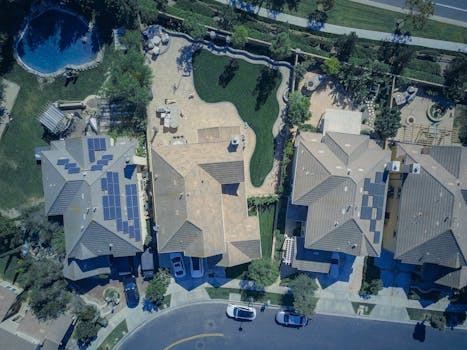
Introduction to Smart Cities

As we look towards 2025, the concept of smart cities is becoming increasingly relevant. These urban areas leverage technology to enhance the quality of life for their residents, optimize resource usage, and improve the overall efficiency of city services. With urbanization continuing to rise, understanding the trends that will shape smart cities is essential.
Technology Integration in Urban Planning

One of the key trends for smart cities is the integration of advanced technology into urban planning. This includes the use of Internet of Things (IoT) devices, big data analytics, and artificial intelligence (AI) to monitor and manage city operations. Cities will implement smart sensors to collect data on traffic patterns, energy consumption, and waste management, allowing for more informed decision-making.
Moreover, this technology will facilitate real-time communication between city infrastructure and residents. For instance, smart traffic lights will adapt to current traffic conditions, reducing congestion and improving travel times. This level of integration is expected to enhance urban mobility significantly.
Sustainability and Green Initiatives

As climate change becomes a more pressing issue, sustainability will be a central focus for smart cities. By 2025, we can expect cities to adopt more green initiatives, including the promotion of renewable energy sources, green buildings, and sustainable public transportation options.
Smart cities will likely implement energy-efficient systems, such as smart grids that optimize energy distribution and reduce waste. Cities will also focus on increasing green spaces, which not only help in sequestering carbon but also improve the mental well-being of residents. Urban farming initiatives may also gain traction, allowing cities to produce food locally while reducing the carbon footprint associated with transportation.
Enhanced Public Services

Another significant trend in smart cities is the enhancement of public services through technology. By 2025, we can anticipate improved public safety measures, healthcare services, and education systems. Smart surveillance systems will help monitor crime rates and ensure public safety, while telemedicine services will provide residents with better access to healthcare.
Education systems in smart cities will also benefit from technology, utilizing e-learning platforms and smart classrooms to enhance the learning experience. This approach not only provides flexibility but also allows for personalized learning experiences tailored to individual student needs.
Community Engagement and Participation

Finally, smart cities will emphasize community engagement and participation. By leveraging technology, cities will create platforms for residents to voice their opinions and participate in decision-making processes. This trend promotes transparency and fosters a sense of community ownership over urban development.
Through mobile applications and online forums, citizens will be able to report issues, provide feedback on city initiatives, and suggest improvements. This participatory approach ensures that urban development aligns with the needs and desires of the residents, ultimately leading to a more harmonious living environment.



